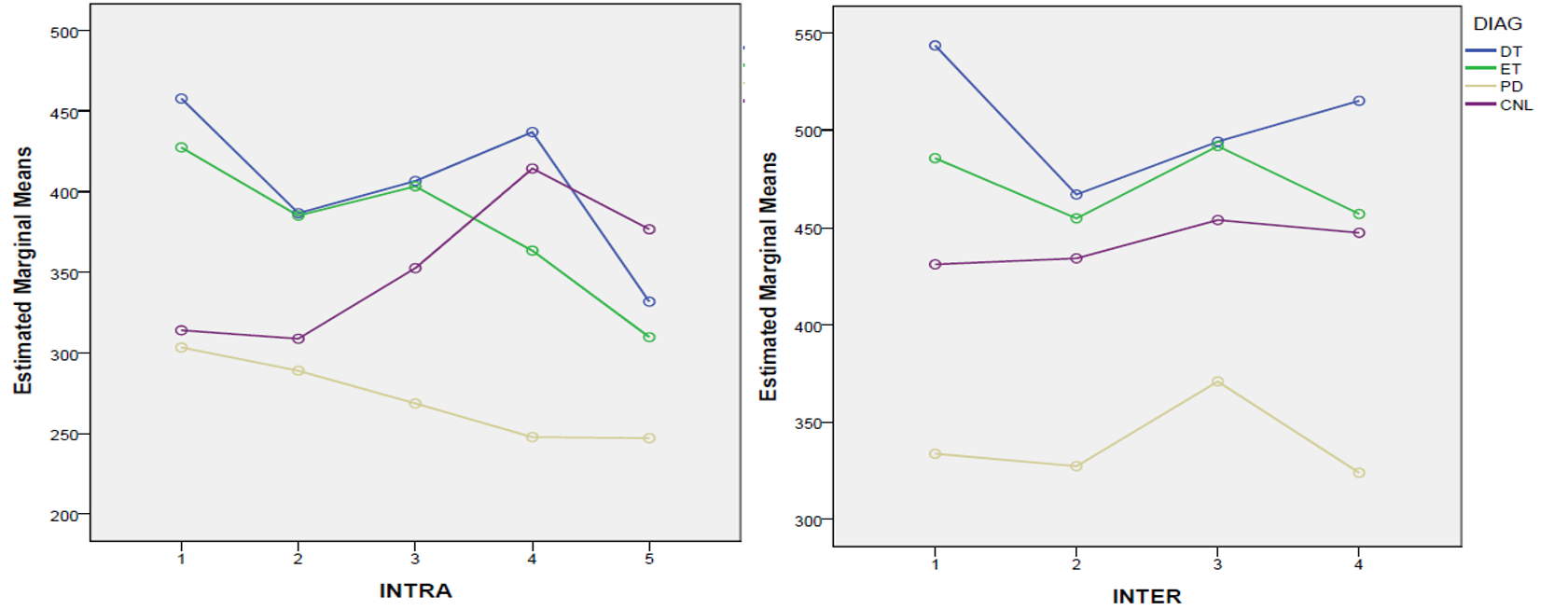Category: Tremor
Objective: To develop and validate an automated analysis algorithm for pen-on-paper Archimedes spirals.
Background: Spiral drawings are used in the clinic to identify and quantify tremors. Though tablet-based methods are available for objective analysis, there is limited data regarding automated analysis of pen-on-paper spirals.
Method: Tremor patients and healthy volunteers (HV) were recruited at the Movement Disorder clinic of a tertiary-care, university hospital. Subjects drew clockwise spirals on standard template (15cm x 15cm square with a central dot) paper. Images were scanned and processed by an in-house algorithm to compute the mean deviation (MD) and tremor variability (TV). MD and TV were compared with 1) Bain and Findley spiral rating scale (median of 3 independent raters blinded to the diagnosis), 2) FTM-TRS total, part A, B and C scores (in tremor patients) and 3) log10 transformed Peak Power (PP) and Total Power (TP) of spectrum (1-30Hz) derived from tri-axial accelerometer power spectral density data. Receiver operating curve statistics were applied to identify a cut-off score to distinguish between tremor and control spirals. Loop widths (LWinter and LWintra ) were computed as exploratory variables to differentiate tremors.
Results: We recruited 100 participants (25 dystonic tremor (DT), 25 essential tremor (ET), 25 Parkinson’s disease (PD) and 25 HV). Mean MD values were significantly higher in tremor patients compared to controls (tremor, MD= 48.9±26.3, HV, MD= 26.4±5.3, p<0.001). MD showed good correlation with Bain and Findley ratings (Spearman’s rho=0.491, p=0<0.001) and FTM-TRS Part B scores (rho=0.260, p=0.032). MD correlated significantly with accelerometric measures of postural tremor (posture 1:TP, rho=0.366, p<0.001 and PP, rho=0.402, p<0.001; posture 2: TP, rho=0.338, p=0.001 and PP, rho=0.387, p<0.001) but not rest tremor. MD at a cut-off value of 30.3 had sensitivity of 80.9% and specificity of 76.0% to detect tremor (AUC: 0.83; 95% CI 0.75 to 0.91, p<0.001). LWinter and LWintra could distinguish PD spirals from DT, ET and HV (Figure 1).
Conclusion: Automated analysis of pen-on-paper spirals can generate robust variables to quantify tremor and putative variables to distinguish tremor syndromes. Minimal hardware and technical requirements maybe a distinct advantage for resource limited settings and epidemiological surveys.
To cite this abstract in AMA style:
R. Rajan, R. Anandapadmanabhan, VY. Vishnu, A. Gupta, R. Bhatia, MB. Singh, AK. Srivastava, MVP. Srivastava. Automated analysis of pen-on-paper spirals for tremor detection, quantification and differentiation [abstract]. Mov Disord. 2021; 36 (suppl 1). https://www.mdsabstracts.org/abstract/automated-analysis-of-pen-on-paper-spirals-for-tremor-detection-quantification-and-differentiation/. Accessed April 21, 2025.« Back to MDS Virtual Congress 2021
MDS Abstracts - https://www.mdsabstracts.org/abstract/automated-analysis-of-pen-on-paper-spirals-for-tremor-detection-quantification-and-differentiation/

